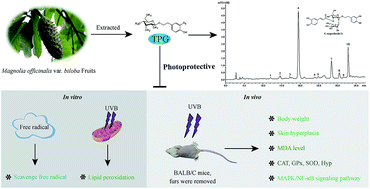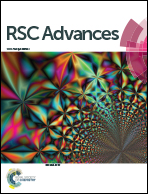Total phenylethanoid glycosides and magnoloside Ia from Magnolia officinalis var. biloba fruits inhibit ultraviolet B-induced phototoxicity and inflammation through MAPK/NF-κB signaling pathways
Abstract
Magnolia officinalis var. biloba is used as a traditional medicine in China and as a food additive in the United Kingdom and the European Union. In this study, total phenylethanoid glycosides (TPG) and magnoloside Ia (MIa) from M. officinalis var. biloba fruits showed excellent radical scavenging activities and potent inhibition activities against ultraviolet B (UVB)-induced oxidative damage in vitro. In vivo, TPG and MIa inhibited UVB-induced skin phototoxicity in mice upon continuous irradiation for 10 days. Changes in the levels of malondialdehyde, catalase, glutathione peroxidase, superoxide dismutase, and hydroxyproline caused by UVB irradiation were remarkably reversed in a dose-dependent manner after treatment with TPG or MIa. Protein-level analysis further showed that compared with the UVB group, the TPG high-dose group or MIa group significantly down-regulated MAPK/NF-κB signaling pathways. Therefore, TPG and MIa possessed a powerful photoprotective property that can be applied in food and antiphototoxicity formulations.

- This article is part of the themed collection: Editors' collection: Food Engineering, Science, Technology, and Nutrition


 Please wait while we load your content...
Please wait while we load your content...